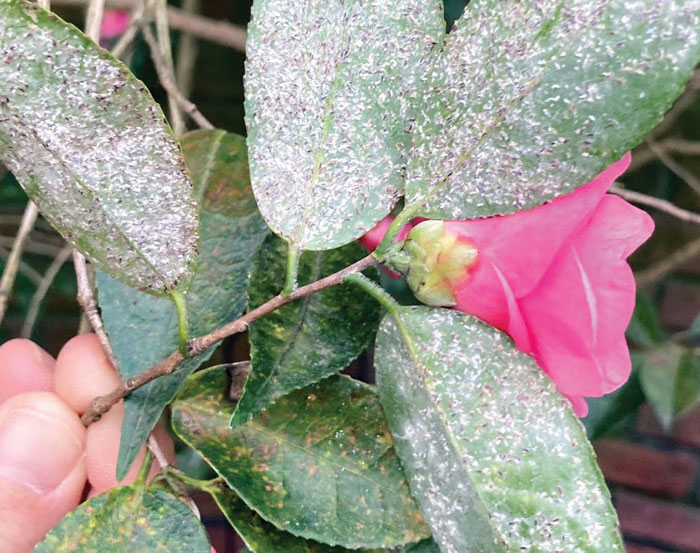Darrell Blackwelder column: What to do for tea scale infestation on camellias
Published 12:00 am Saturday, March 26, 2022

- Tea scale is a common problem in early spring on camellias and hollies.
Camellias were almost at their peak of blooms a few weeks ago and then frigid temperatures ended our spring flower show. With a closer examination of the damaged blooms, other problems with the shrub’s foliage may be upon us. Many homeowners are having problems with scale insects. Tea scale is a common problem in early spring on camellias and hollies but they also infest boxwoods. This is a minute insect that feeds on the underneath side the leaves causing discoloration on the upper side of the leaves. The easiest way to check for tea scale is to look for leaves with yellow and tan splotches. When you turn the leaves over, you’ll often find multiples of snowy white, miniscule insects.
Large infestations cause premature leaf drop and a decrease in blooms. If there are only a few leaves are infested these can be removed without effecting the health of the plant. Camellias are tough plants and can tolerate minor leaf removal. Unfortunately, shrubs that are severely damaged from years of scale infestation should be replaced. Horticultural oils and neem seed oil are recommended as a common control for the pest. Apply ample spray covering both the upper and undersides of the leaves. The best time to spray is very soon after bloom and when the danger of cold weather has passed. Two applications a couple of weeks apart may be sufficient. However, if the problem still persists, systemic insecticides may also be implemented. Thoroughly read and understand the label before applying any pesticide. Go to https://content.ces.ncsu.edu/tea-scale-1 for more detailed information on controlling tea scale and other camellia insect pests.
Darrell Blackwelder is the retired horticulture agent and director with the North Carolina Cooperative Extension Service in Rowan County. Contact him at deblackw@ncsu.edu.




